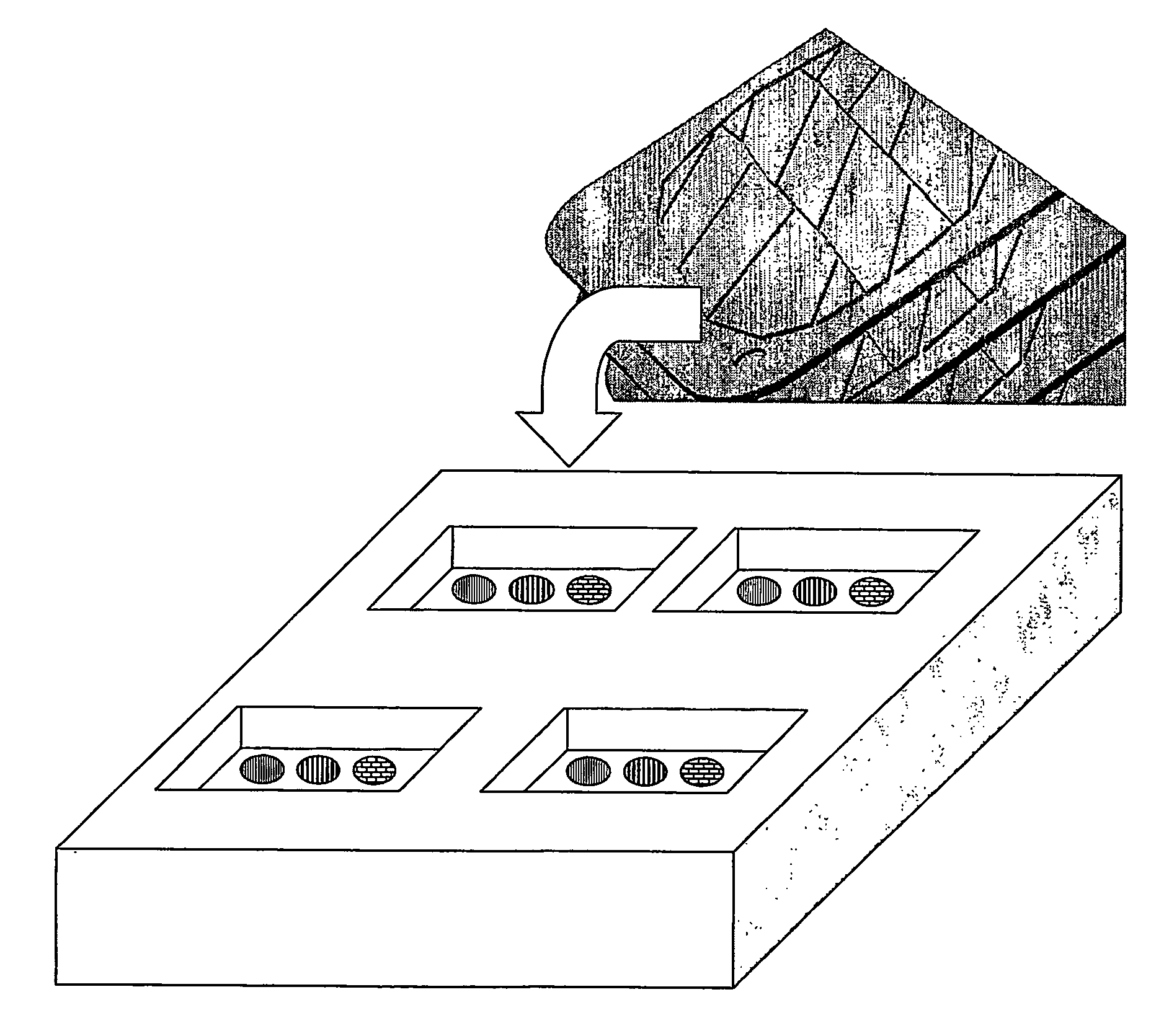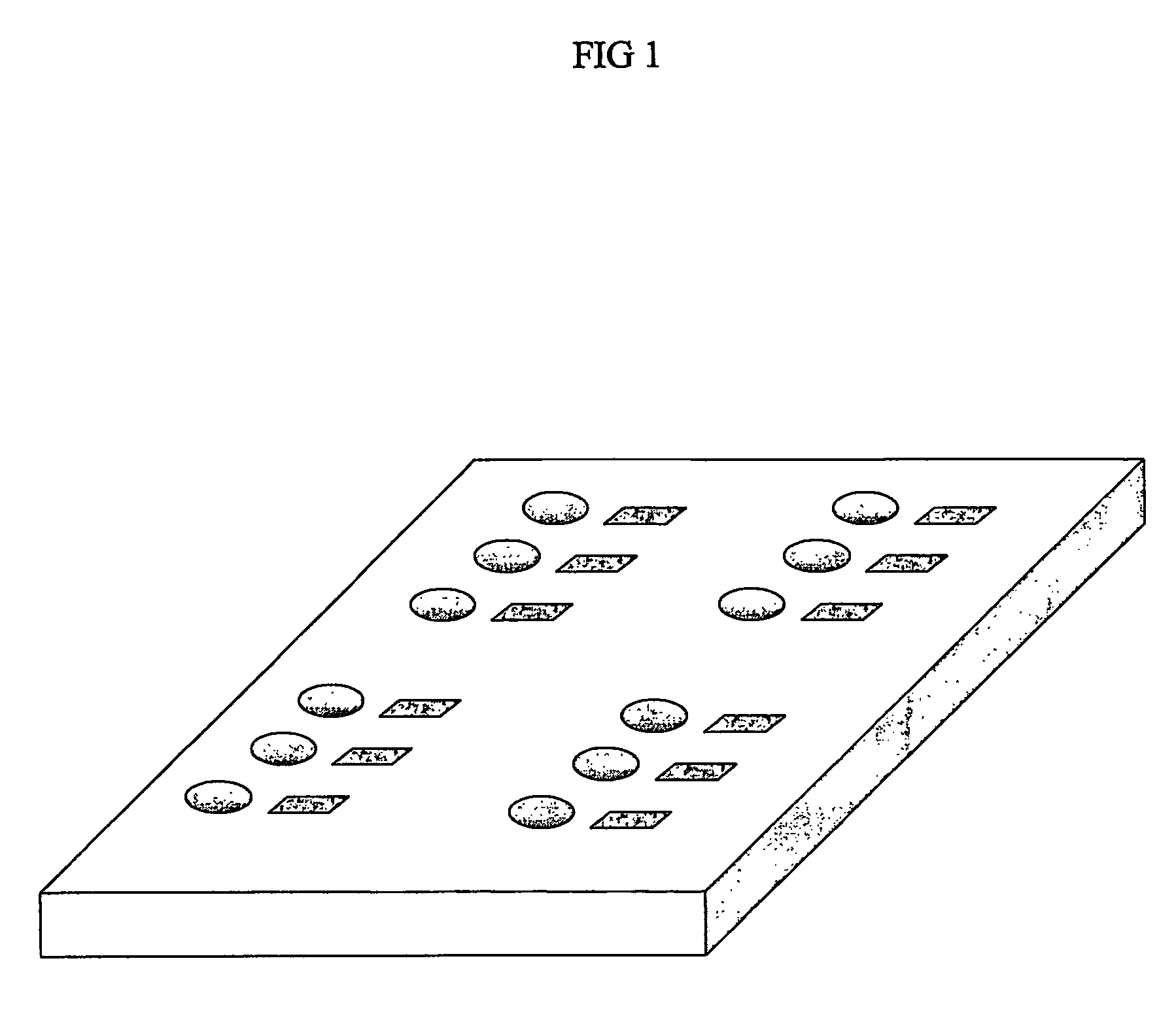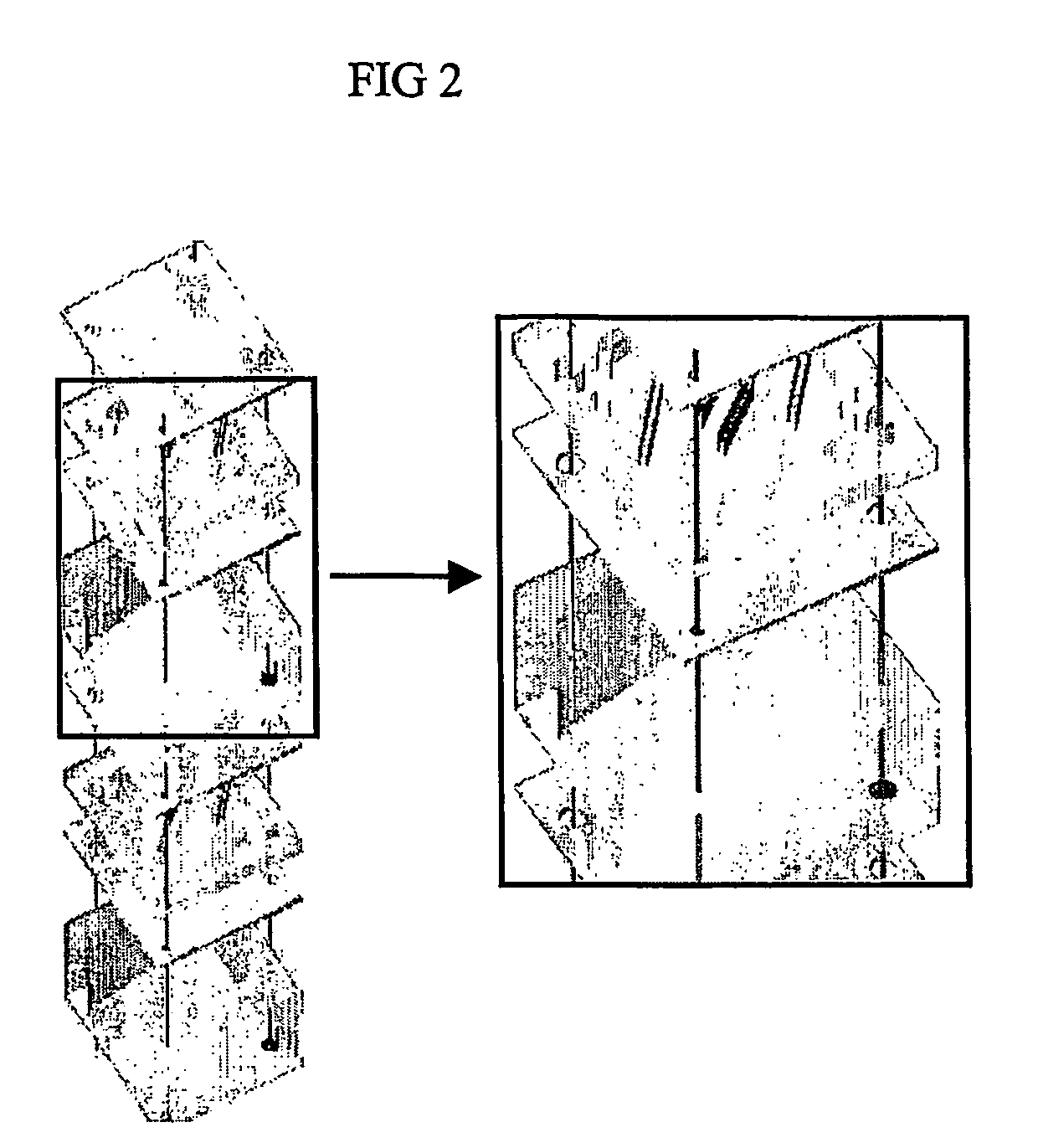Nanotopographic compositions and methods for cellular organization in tissue engineered structures
a tissue engineered structure and composition technology, applied in the field of nanotopographic compositions and methods for cellular organization of tissue engineered structures, can solve the problems of difficult scaling up and acceleration, lack of method resolution necessary to fashion the finest features of the organ, and the large, three-dimensional nature of the target tissue or organ for replication
- Summary
- Abstract
- Description
- Claims
- Application Information
AI Technical Summary
Problems solved by technology
Method used
Image
Examples
Embodiment Construction
[0035]The present invention comprises compositions and methods wherein cells of differing types are compartmentalized upon surfaces comprising micropatterned topography.
I. Tissue Engineered Structures of the Invention
[0036]Nanotopographic patterning methods of the present invention can be applied to any microfabricated tissue engineered structure known in the art.
[0037]In a specific embodiment, nanotopographic patterning methods of the invention can be applied to the microfabricated tissue engineered structures described in U.S. Pat. No. 6,455,311, the contents of which are incorporated herein by reference.
[0038]In a yet another specific embodiment, nanotopographic patterning methods of the invention can be applied to the microfabricated tissue engineered structures described in U.S. patent application Ser. No. 10 / 187,247, the contents of which are incorporated herein by reference.
[0039]In a yet another specific embodiment, nanotopographic patterning methods of the invention can be ...
PUM
| Property | Measurement | Unit |
|---|---|---|
| temperatures | aaaaa | aaaaa |
| LCST | aaaaa | aaaaa |
| critical solution temperature | aaaaa | aaaaa |
Abstract
Description
Claims
Application Information
 Login to View More
Login to View More - R&D
- Intellectual Property
- Life Sciences
- Materials
- Tech Scout
- Unparalleled Data Quality
- Higher Quality Content
- 60% Fewer Hallucinations
Browse by: Latest US Patents, China's latest patents, Technical Efficacy Thesaurus, Application Domain, Technology Topic, Popular Technical Reports.
© 2025 PatSnap. All rights reserved.Legal|Privacy policy|Modern Slavery Act Transparency Statement|Sitemap|About US| Contact US: help@patsnap.com



